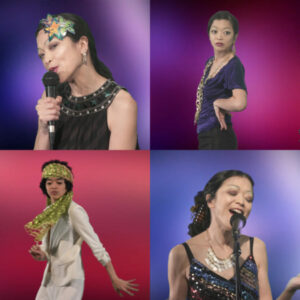
A Kiwi-born artist recently returned to Auckland to participate in a Te Tuhi exhibition in which her work is featured.
A self-described interdisciplinary artist, Li-Ming Hu makes videos, objects, installations and performances, “with a carnivalesque sensibility, often using pop culture as a critical lens”.
Two of her pieces are featured in five of Te Tuhi’s five new exhibitions, Elsewhere and nowhere else, which will be open to the public until September 4.
Having lived in Auckland most of her life, Hu has been interested in art since she was a child.
With a Master of Arts degree in history from the University of Auckland, Hu also attended Auckland University of Technology and did one year at the Elam School of Fine Arts.
“I did art at high school but ended up pursuing other things for a long time,” Hu says.
She worked at the New Zealand Human Rights Commission, was in a band called The Tokey Tones, and has presented for music shows.
In 2017, Hu moved to the US to continue her studies in fine arts at the School of the Art Institute of Chicago, graduating in 2019.
She lives in New York City and works for two artists.
Her first work featured in the Elsewhere and nowhere else exhibition, alongside artists Kah Bee Chow and Yuk King Tan, is a video she made in 2020 dealing with the band Boney M, originally exhibited in the US.
“That was an interesting experience,” Hu says.
“Learning how my work can be read differently depending on what country I’m in.”
Her second piece is inspired by her acting career in New Zealand.
Hu starred in Shortland Street as Li Mei Chen, Power Rangers RPM as Gemma, and Lisa Fong in the award-winning short film Take 3.
While she initially felt self-conscious about addressing her acting past, she realised it fed a lot into her work.
“I decided to just embrace it,” she says.
For her second piece, Hu made a structure based on her room in New York.
Approximating a television or theatre set, the structure is populated with both real items from her room and custom-made fake items rendered in textiles and soft sculpture, including a curtain printed with various documentation of her application for an artist visa to stay in the US.
At the opening of the exhibitions on June 11, Hu re-enacted a Zoom professional development talk for artists.
“This person’s selling this membership, saying ‘I’m going to help you get more shows, let me show you how,'” she says.
“The talk is full of advice on what you have to do to succeed as an artist these days.”
This is in line with one of Hu’s main concerns in her artwork – the various things artists have to do and ways they need to perform to support their art marking, such as having a day job or doing interviews.
Hu is excited to work alongside Chow and Tan.
“I looked up to them both in art school,” she says.
She returns to New York in early July.










